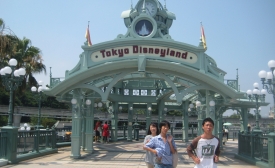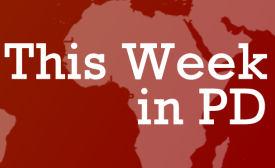Cultural Diplomacy
Jim Brown: A couple of things: First of all, rock 'n' roll had been outlawed in the beginning in the Soviet Union. In a way--and I'm making a larger film about this--rock 'n' roll became a way to protest the government and to stick up for individualism. It gathered crowds, the Soviet Union wasn't into religion or anything that gathered crowds other than their own communist politics.
The director of Taiwan's National Palace Museum (NPM) said she hopes upcoming historical exhibits of NPM cultural treasures in Japan will showcase Taiwan's 'soft power'. Fung Ming-chu's remark came as over 200 sets of precious works from the NPM are set to be exhibited at the Tokyo National Museum from June and later this year at the Kyushu National Museum. It marks the first time NPM treasures will be displayed in an Asian country other than Taiwan.
In a country with little or no place to gather for the free expression of ideas and no place to talk politics without fear of repression, these new kitchens made it possible for friends to gather privately in one place. These "dissident kitchens" took the place of uncensored lecture halls, unofficial art exhibitions, clubs, bars and dating services.
China's most celebrated sage has become the emblem of the country's soft-power drive and of its people-to-people diplomacy in Africa. Todd Balazovic reports.In Africa, it's Chinese businesspeople who sign multimillion-dollar deals, top politicians who sign major cooperation agreements and people who embody China's most famous thinker who act as cultural ambassadors.
Meridian International Centre and the Embassy of the United Arab Emirates (UAE) have launched Past Forward: Contemporary Art from the Emirates, a groundbreaking cultural diplomacy programme that brings Emirati artwork and artists to the United States.The exhibition tells the story of the UAE’s rich history, culture and rapid development through the works of 25 notable Emirati artists. Past Forward represents the first major touring exhibition of Emirati art in the world.

A recent book from Martha Bayles, a lecturer in humanities at Boston College, tackles the question of how American entertainment industry products confound official U.S.

Can culture always be used as a tool for positive public diplomacy?
‘Art is committed to telling truths, even if unpalatable. This can make life uncomfortable for governments’. Abraham Oghobase is a Nigerian photographer in his mid-thirties whose witty and original pictures are gaining him an international reputation. His work is based on the documentary tradition, but it is given a distancing quality by the artist’s own presence in the photograph. This combination of reportage and performance art, while not unique, compellingly adds layers of complication to otherwise straightforward depictions of the socio-economic tensions of his homeland.







